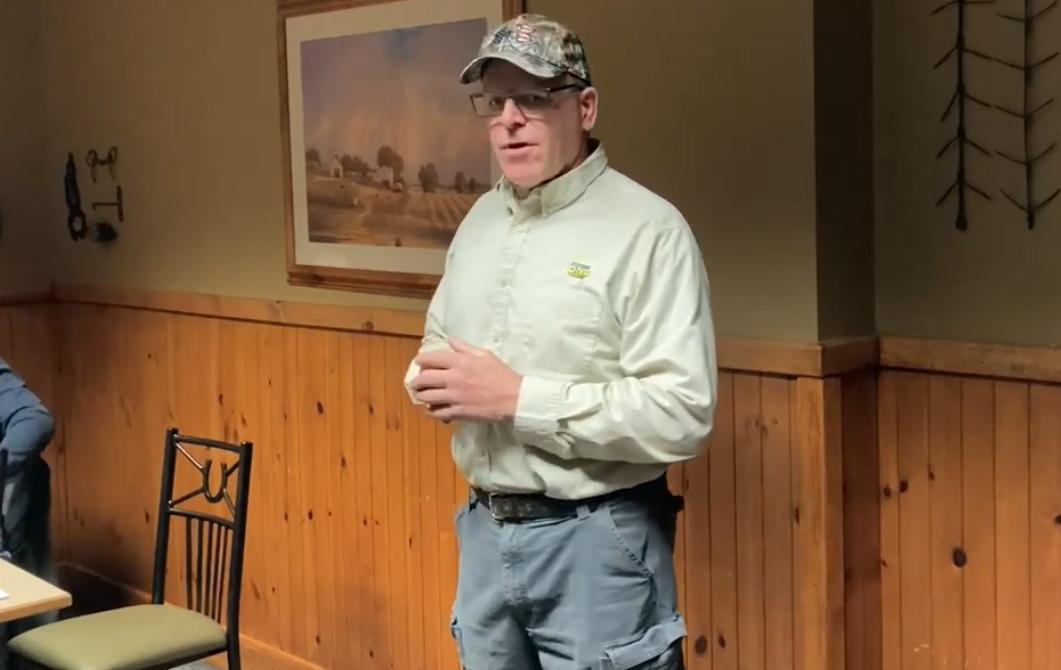Steve Woodruff, of the Iowa Iowa River Wildlife Unit branch of the DNR,and wildlife management biologist for our area, spoke to the Vinton Kiwanis Club on Tuesday. The public wildlife areas that he covers are in the counties of Linn, Benton, Iowa, Cedar, Johnson, Tama, Marshall, and some of Poweshiek.
Woodruff manages two crews. One is the Hawkeye Wildlife Unit, which is in the Otter Creek Marsh, also covering the outlying areas there, and the other covers Dudgeon Lake and the Red Fox area.
When Woodruff first arrived 3 1/2 years ago, the Crismon tract had just been acquired. After locating the boundaries for the land, a seasonal wetland project was created, This will fill with water, once the river rises and then the water will be trapped inside a dike with the help of some logs. It's been kept dry to get some vegetation growing on it to stabilize the ground so that it wouldn't erode if water should fill it too quickly.
Once it fills he hopes that will draw some waterfowl who are migrating or nesting. He said the Isaac Walton League has helped to prepare the area by constructing wooden duck houses in the area. The area's biggest challenge is encroaching trees. He said that silver maples, cottonwood, and ash trees tend to have seedlings that try to grow there, so he tries to keep that area clear for prairie growth and plants that are conducive to the wetland.
On the northern end of the Crismon area, there is a sandy ridge where with the help of a government grant, there has been a box turtle habitat opened up to help the turtles find nesting through the winter.
He also received a grant to work on the south ridge to make it habitable for some of the other endangered species and wildlife. He said that right now the brush is so thick that it needs attention.
The plan for the Dudgeon Lake area is to manage it with prairie grass, controlled burns and getting a schedule to rotate the different areas and add to the seeds planted. He said it takes about 3-4 years for the grasses to really take hold.
He's added some dove plots for those that dove hunt. There is also sunflowers that can be seen from the highway. He's struggled with this area. Flooding wasn't helpful and then when they did grow well, the deer would come along and take the heads off of the plants. So to try to outsmart the animals, he planted what he called a lure field. In that area around the sunflowers, he planted soybeans or oats so that the deer would focus on that food and leave the sunflowers alone.
He said he's had a lot of calls asking if people could come out there and get wedding pictures taken or senior pictures and even someone wanting to reserve it for a wedding the following year. He said of course that year the flowers were only about knee-high at the time they would have wanted it.
Another of the pests that he deals with is honeysuckle. A very invasive plant. So he spends time trying to eradicate that plant. They grind it down then treat it in about June and then again in November he treats the area. Honeysuckle stays green in the winter, so he will go out and spot treat areas that it is still growing. He thinks that he's getting ahead of it in the 17 acre area where he is working.
Dudgeon Lake consists of about 2,000 acres right now, and he has another 36,000 acres to oversee. His goal is to have a diverse habitat to attract a variety of species. The range is more than deer and turkey, it includes partridge, reptiles and even insects. He summed it up best when he said, "If you build it they will come."

Comments
Submit a CommentPlease refresh the page to leave Comment.
Still seeing this message? Press Ctrl + F5 to do a "Hard Refresh".